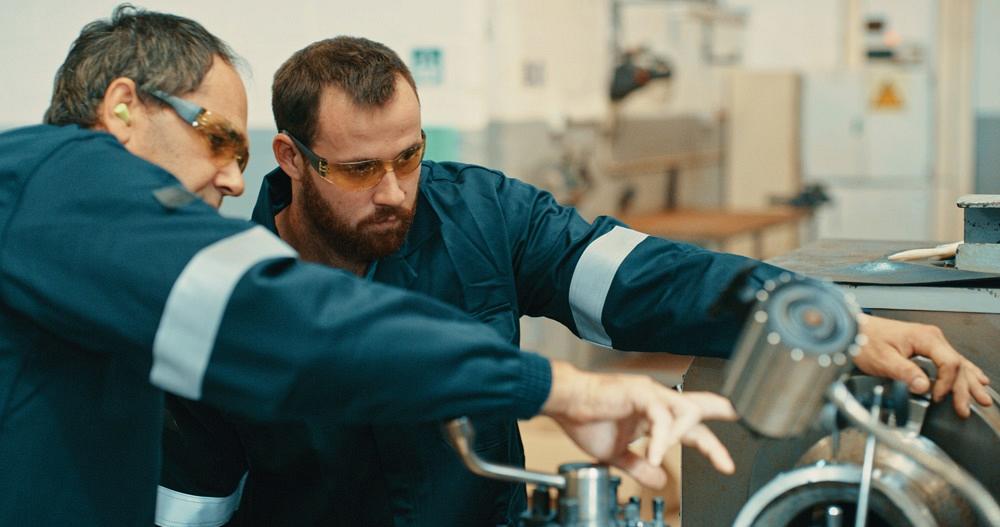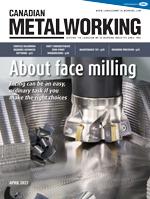Founder/CEO
- FMA
- The Fabricator
- FABTECH
- Canadian Metalworking
Maintenance 101
Is maintenance a time waster or a time saver?
- By Bryan Christiansen
- April 17, 2023
- Article
- Management

A well-executed maintenance strategy reduces equipment breakdowns and helps companies manage their usually modest maintenance budgets.
Capital equipment maintenance remains a critical aspect of daily shop floor operations, yet some shop owners still pay little or no attention to it. Proper equipment maintenance maximizes shop productivity; it means higher revenues and uninterrupted equipment availability.
Metal manufacturers enjoy many benefits by implementing suitable maintenance strategies. The efficiency of different maintenance measures also increases with the integration of advanced digital technologies, which create improved equipment performance, fewer breakdowns, and lower maintenance costs.
Shop owners can choose to implement any of the following maintenance strategies depending on the size of their facility, criticality of production equipment, and available maintenance budgets:
- preventive maintenance
- predictive maintenance
- condition-based maintenance
- reactive maintenance
Maintenance as a Time-sink
Why does the debate on whether maintenance is a time waster or a time saver even exist?
Well, establishing and sustaining routine maintenance programs takes time and strategic implementation.
Rushed or improper maintenance implementation causes interruptions to daily productivity. This results from poor maintenance planning, improper use of digital maintenance tools, and miscommunication among different shop floor employees.
A company depending solely on a run-to-failure (reactive) maintenance model experiences extended equipment downtime because of a sudden surge of maintenance tasks. Sometimes, companies lack the necessary maintenance, repair, and operations (MRO) assets to restore equipment to good working conditions. Some machine defects may be too complex to repair and require the outsourcing of experts from OEMs or dealers.
Inefficient work practices and a lack of standard operating procedures (SOP) turn equipment maintenance into a time-wasting venture. Technicians use the wrong tools and troubleshooting and repair procedures that complicates maintenance workflows and increases equipment damage. In the end, the metal manufacturing shops sustain extended production downtime.
Making Maintenance Work
Establishing a reliable maintenance program for a manufacturer is a game changer considering the stiff competition in this market segment. Proper maintenance planning and execution yields several desirable productivity and financial results, including fewer equipment breakdowns and component failures, which are contributors to lower shop productivity.
Well-scheduled maintenance time is a fraction of total production time. Companies should initiate scheduled production downtime while ensuring it has minimal impacts on routine workflows, for example, during periods with low machinery demand. Additionally, companies should use advanced digital technologies to schedule and track the maintenance of diverse production assets across the facility.
Regular equipment maintenance ensures all production assets operate optimally. Metal manufacturers can achieve their daily production targets without worrying about stoppages and increased scrap rates. Additionally, assets running at peak efficiency consume less energy, meaning companies save more money.
4 Time-saving Tips to Streamline Maintenance
How can shop owners streamline maintenance programs and turn them into reliable time savers? Here are four tips:
1. Digitize Maintenance Management
Shop owners can foolproof maintenance management by investing in a high-quality digital tracking system. One way to achieve this is by implementing a computerized maintenance management system (CMMS) that is customized to meet the maintenance needs of an individual facility. Such systems are beneficial for short- to long-term maintenance planning, storage and analysis of maintenance records, maintenance workload management, and team collaboration.
A CMMS holds equipment-specific technical information, such as recommended maintenance intervals, troubleshooting and repair procedures, and vital workplace safety information. These features simplify maintenance workflows because technicians receive timely alerts for routine maintenance, ensuring maintenance workloads are distributed evenly and the mean time to repair assets is low.
Digitized maintenance management reduces the quantity of deferred maintenance work, and technicians can leverage technical resources to deliver consistent maintenance results.
Overall, companies extend capital equipment lifetime, eliminate unplanned downtime, handle complex maintenance tasks, and reduce maintenance-related costs.
2. Establish SOPs
Aside from proper planning, shop owners can establish SOPs to guide technicians when executing their duties. These procedures are essential for eliminating human errors during maintenance that extend equipment downtime or cause additional damage to assets under repair.
Shop owners should include these procedures in their CMMS and create digital checklists to help ensure technicians do not overlook maintenance steps that compromise the quality of the maintenance work.
Having SOPs means technical teams can complete maintenance tasks within stipulated timelines without errors. It helps eliminate rework and additional expenditure on replacement parts damaged because the wrong tool was used or replacement parts were improperly installed.
3. Develop an Inventory Management Strategy
Shop owners waste productive time if they lack an inventory management strategy. A lack of adequate MRO supplies means companies often have to extend equipment downtime.
The last-minute rush to acquire these supplies requires the company to spend more money to expedite spare parts shipping. Companies can avoid such time- and money-wasting situations by developing a reliable inventory management strategy.
Identifying MRO needs over fixed timelines based on previous maintenance records and engaging a vendor who can deliver these supplies promptly to ensure timely, accurate, and cheaper equipment maintenance is imperative.
4. Train Maintenance Employees
Technical teams on the shop floor should learn how to troubleshoot and implement routine equipment care practices to enhance asset efficiency, durability, and productivity. These teams need training on digital systems to help them diagnose, report, and perform scheduled and emergency maintenance.
Investing in training enhances the technical capabilities of shop floor teams, enabling them to complete maintenance tasks faster and more accurately, which extends asset productivity and reduces hourly wages for maintenance teams.
Prioritizing equipment maintenance is vital for minimizing downtime, extending asset durability, and increasing productivity. Shop owners should identify existing maintenance challenges and adopt technology-based procedures to manage and streamline asset maintenance. A well-executed maintenance strategy reduces equipment breakdowns and helps companies manage their usually modest maintenance budgets.
Bryan Christiansen is the founder/CEO of Limble CMMS, 3290 W. Mayflower Ave., Lehi, Utah 84043, 801-851-1218, www.limblecmms.com.
About the Author

subscribe now


Keep up to date with the latest news, events, and technology for all things metal from our pair of monthly magazines written specifically for Canadian manufacturers!
Start Your Free Subscription- Trending Articles
Sustainability Analyzer Tool helps users measure and reduce carbon footprint

Mitutoyo updates its end-user portal

Enhance surface finish with high-speed machining

Equispheres secures $20 million investment round

Solid carbide drills produce precision holes in short chipping materials

- Industry Events
Automate 2024
- May 6 - 9, 2024
- Chicago, IL
ANCA Open House
- May 7 - 8, 2024
- Wixom, MI
17th annual Joint Open House
- May 8 - 9, 2024
- Oakville and Mississauga, ON Canada
MME Saskatoon
- May 28, 2024
- Saskatoon, SK Canada
CME's Health & Safety Symposium for Manufacturers
- May 29, 2024
- Mississauga, ON Canada















